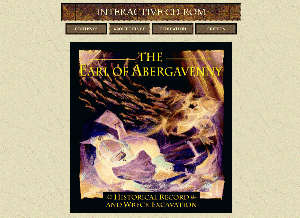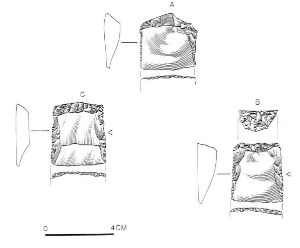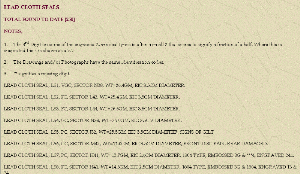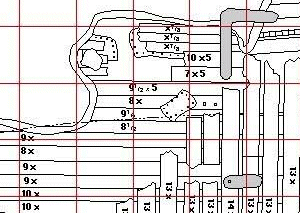
Fig.1: Earl of Abergavenny title page. The layout of the report is clear and well-designed with most navigation carried out through the use of simple hotlinks.
Cite this as: Petts, P. 2003 Review of The Earl of Abergavenny. Historical Record and Wreck Excavation CD-Rom, Internet Archaeology 14. https://doi.org/10.11141/ia.14.8
Windows Internet Explorer 4 or higher. £10 + 0.80 postage/packing. Available from Ed Cumming, Weymouth Underwater Archaeological Group (WUAG), 9 Newtons Road, Weymouth, Dorset, DT4 8US Available: http://www.weymouthdiving.co.uk/cd_rom.htm
In early February 1805 a small fleet of East Indiamen accompanied by the frigate Weymouth set sail from Portsmouth heading first for Bengal and ultimately for China. However, barely had the voyage began when, following bad weather and confusion, one of the boats, the Earl of Abergavenny, struck the Shambles bank just off Portland Bill. Although the crew managed to free it, it was so badly damaged it sank while trying to make for the safety of Weymouth. Over 250 crew and passengers drowned. The wreck has until now been best known for causing the death of John Wordsworth, the ship's commander and brother of the poet William Wordsworth.

Fig.1: Earl of Abergavenny title page. The layout of the report is clear and
well-designed with most navigation carried out through the use of simple
hotlinks.
This excellent CD report of archaeological investigations on the wreck site carried out since 1980 by the Weymouth Underwater Archaeological Group (WUAG) brings us the full picture of the events leading up to the wreck, and a record of the remains found by the team of divers (Fig.1). The complex campaigns of diving have been carried out alongside extensive documentary and historical work. The huge amount of data created by this project has inevitably led to challenges for the WUAG regarding its publication (Cumming 2002). The decision to publish via a CD-ROM has allowed very large quantities of data and discussion to be published. The current version of the CD contains over 100,000 words of text, 1560 files and over 1000 illustrations (JPEGS). All for the grand price of 10 GBP. The volume can be browsed using a commercially available browser but is also supplied as compiled file using Web Compiler, which has the advantage of a search facility.
The volume is divided into three broad levels: the 'popular level' dealing with the historical events before and after the wreck itself, the 'project level', which deals with the archaeological side of the investigations, and finally a 'study level', which includes more detailed research papers and finds reports and a wide range of background material.
In the 'popular level' there is an excellent potted history of the East India Company and its merchant fleet, as well as a narrative of the events leading up to and following the wreck. The extensive documentation of the Wordsworth family in the aftermath of the tragedy especially serves as a reminder of the human cost of such shipping disasters. There is a particularly interesting discussion of the early salvage attempts carried on the wreck. As well as shedding light on 19th century maritime technology, it is also a reminder of the post-depositional events that many wrecks have undergone. One salvor noted that he 'gave her old remains a gentle shake with a canister of 83 pounds of gunpowder'! These salvage operations removed large quantities of the cargo, worked 'till the cargo got so thin, not worth getting up'. The ravages of salvage operators, toredo (shipworm) and gribble (a small destructive crustacean) mean that there are limited surviving remains of the ship itself. A small section (43m by 9m) is all that remains of the one of the largest ships to be chartered by the EIC. This has been planned and the site has also been gone over with magnetometer and side scan surveys. There has been no attempt to disturb any of the surviving structure though the overburden and debris has been removed.

Fig.2: Three styles of gunflint. The finds drawings appear nicely on the screen. However, the images are often cropped when printed out.
In consequence, the wreck has not produced the huge quantities of cargo goods that have characterised other work on EIC and Verenigde Oostindische Compagnie wrecks, such as the one million coins from the Admiral Gardner or the crates of porcelain from the Griffin (Fenwick and Gale 1998, 80-1; Daggett, Jay and Osada 1990). However, the finds that have been recovered provide the archaeologist with an important range of assemblages, one of the most important being the tens of thousands of gunflints (Fig.2) that provide an insight into gunflint technology during an important transitional period and reflect the almost industrial scale of flint manufacture at this period (most were probably manufactured at Brandon in Sussex and Northfleet in Kent). The EIC would have been an important customer for these industries, for at times its armies would have been larger than those of the King.

Fig.3: The four main types of lead cloth seals from the East India Company
The gunflints were clearly a bulk cargo, not intended for use on the boat, and there are traces of possible trade goods. Glass fragments were probably the remains of a consignment of window glass. A collection of spectacle lenses was probably also intended for India. Over 250 lead tags are all that remains of the cargo of over 2000 consignments of cloth known to have been on the ship (Fig.3). The textile trade went both ways, and while the EIC was importing cotton and jute, there was a thriving export of wool, mainly from Devon. The ship was also carrying a range of ceramics. The assemblage is dominated by creamware, presumably part of a private trade consignment. The fragments of a range of stoneware vessels were also found. These were primarily from containers, some with a company name on. These goods, as well as other bottled groceries, such as the intact bottle of cherries, may have been intended for consumption on the voyage, but it is quite possible that they were destined for the British community in Calcutta. Although the EIC had ceased importing Chinese porcelain in 1791, there was a small assemblage of such ceramics. Despite the fact that these were on an outgoing ship, they may have been a private trade consignment being re-exported to India. Finally, there was a range of coinage. This would have included private cash, crew wages, but was mainly made up of official EIC trade coinage. Only a small sample of this survives, as over 62 chests of coinage were recovered during the 19th century salvage operations. The assemblage included silver reals from Potosi (Bolivia), EIC rupees issued in Calcutta, British gold coins and an Indian gold pagoda.
A wide range of other objects have been recovered, ranging from elements of the ship, such as pullies and pulley blocks, remains of the ships armaments, including cannon, grape and bar shot, as well as small arms. There is also a range of personal objects, including a selection of EIC and military buttons, navigation equipment including an octant and several objects owned by named individuals: a watch chain seal owned by an infantry cadet, Cosmas Henry Stewart, the glass seal of Dr Maxwell, and assistant surgeon and even a gold cufflink with the initials JW. Did these belong to John Wordsworth?

Fig.4: Carved coconut shell
Amongst the finds assemblage are a series of objects that throw important light on life below decks. Objects such as a small bamboo drinking vessel and a small group of Chinese coarsewares, usually intended for south-eastern Asian markets, suggest that the range of objects being used by sailors was not drawn simply from British markets. Instead, crews were clearly using a repertoire of material culture derived from a range of sources. Fragments of carved coconut 'scrimshaw' show that there was a culture of collection of foreign souvenirs amongst crews (Fig.4). Whilst the great British public was developing a taste in chinoiserie and tea, sailors were developing their own distinctly cosmopolitan tastes. The consumer cultures of ships crews is perhaps a topic that may bear further study.

Fig.5: Whilst potentially useful, the text data sets might have been less
unwieldy if they could be downloaded as data files. It is fiddly to cut and
paste them into spreadsheets.
The find reports are of varying length. It would have been nice to see more quantification; for example there is no breakdown of the 40,000 gunflints. There is a group of data lists (Fig.5), but these would have to be cut and pasted into another application for any analysis. There are other slight concerns with the finds reports. At the moment they are broadly divided into functional categories, but there is considerable overlap. For example, glassware can be found in the glass, glass (broken), drinking, stoppers and container sections.
In general, the CD is very usable. It is easy to navigate around the site, and there really is an immense about of information lurking within it. For example, there is extensive documentation relating to the ship, including crew and passenger lists, detailed discussions of the developments of the water dredge and lifts used during exploration, poems written by Wordsworth in memory of his brother, and the text of no less than ten contemporary narratives of the wreck. There is even a section of 'out-takes', including team photos and anecdotes about the project.
There are some minor drawbacks with the CD (Fig.6). It is not available for use on Macs, and it would be nice to see descriptive alt-text on the thumbnail images to allow users of screen readers to know what images there are. Some sections are very long, and I ended up printing them out to read as hard copy. However, these are minor quibbles. The joy of such electronic publication is that there is ample scope for resolving such issues. The volume is already on its second edition, and purchasers are eligible for updates at a nominal price.

Fig.6: The plan of the wreck is a presented as a JPEG converted from a TIFF.
This causes slight distortion. It is a large image (2786 pixels wide) and can be scrolled around,
but it is difficult to get an overall view of the plan. New media need to rise to the challenge of how to present large site plans and other detailed images.
In summary, this excellent publication is important for two reasons. First, it is a genuinely important contribution to nautical archaeology and presents a wide range of information about an important site which stands up to comparison with better-known EIC and VOC wrecks, such as the Kemmerland and the Amsterdam. The CD also shows local societies and non-professional groups how new modes of publication can allow the extremely economic publication of important sites. Electronic publication need not require complex programming skills or technological know-how to create an extensive and usable resource. The author, Ed Cummings, who has both edited the text and created the CD, is to be commended on an excellent publication.
Cumming, E. 2002. 'A Simple solution to the storage and/or publication of documentation resulting from the historical research and recording undertaken in archaeological projects'. International Journal of Nautical Archaeology 31(1), 133
Daggett, C., Jay, E. and Osada, F. 1990. 'The Griffin, an English East Indiaman lost in the Philippines in 1761'. International Journal of Nautical Archaeology 19, 35-42
Fenwick, V. and Gale, A. 1998. Historic Shipwrecks: Discovered, protected and investigated. Tempus Publishing, Stroud.
* David Petts
'Keys to the Past' Project Officer
Conservation Team, Environment Directorate
Northumberland County Council, County Hall
Morpeth, Northumberland, NE61 2EF
E-mail: dpetts@northumberland.gov.uk
© Internet Archaeology URL: http://intarch.ac.uk/journal/issue14/reviews/petts.html
Last updated: Wed 18 June 2003